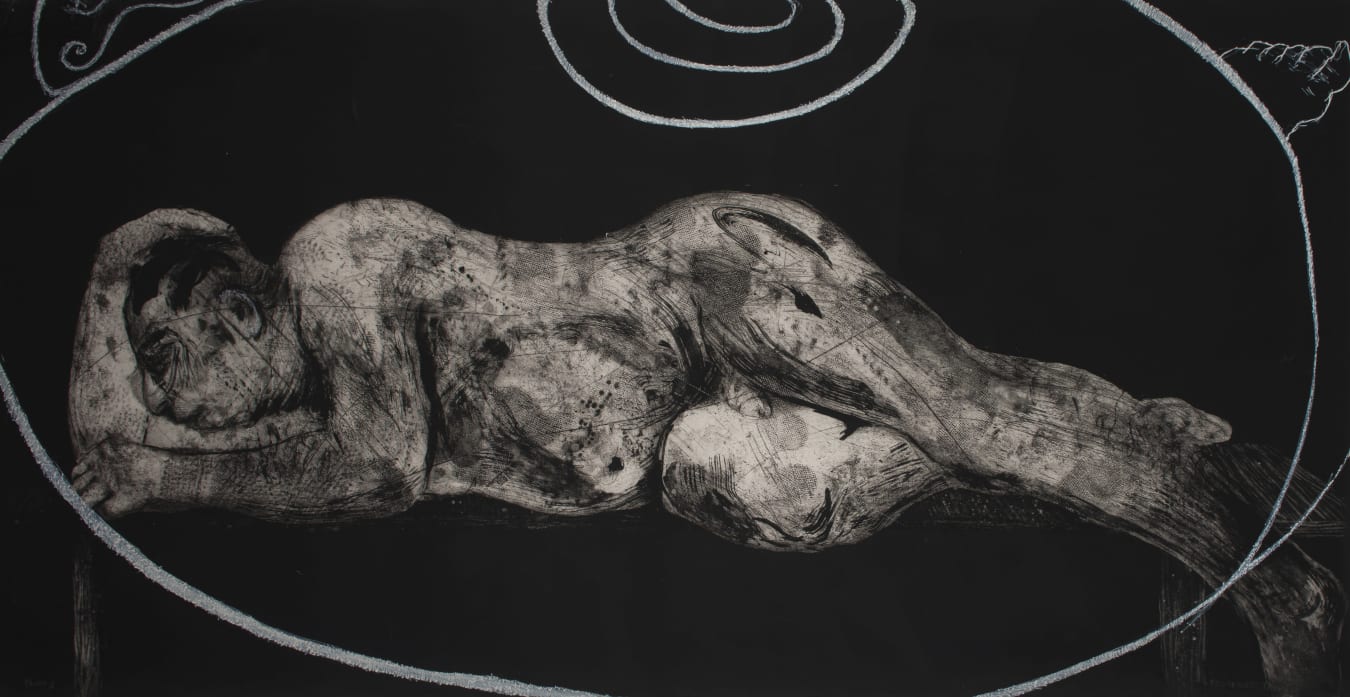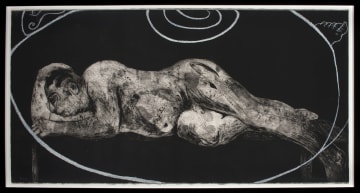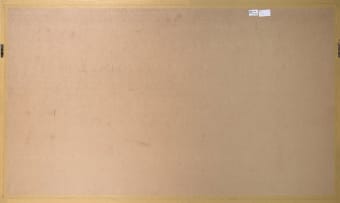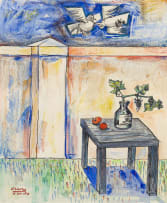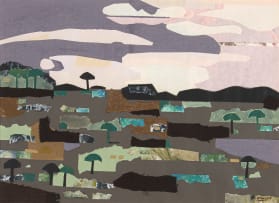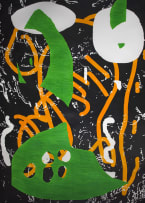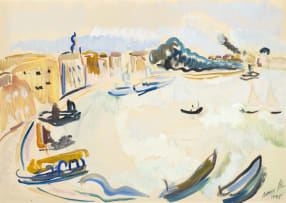Sleeper and Ubu
William Kentridge
About this Item
signed, dated '97 and numbered 'PROOF I' in white conté in the margin
edition of 50, only 30 of the edition
Notes
The present lot is the first artist proof from a limited edition of 50 prints produced and published by David Krut Fine Art, London in 1997. Only 30 of them were numbered and completed by printers Jack Shirreff and Andrew Smith from 107 Workshop. Another example from the edition is held by the Metropolitan Museum of Art and Grinnell Collage Museum of Arts in the United States of America.
The origin of the reclining male figure can be traced back to Ubu Tells the Truth, a portfolio of eight etchings made in 1996-97, and the theatre production Ubu & the Truth Commission. The latter premiered in Weimar, Germany, and went on an international tour culminating in 1998 at Spier in Stellenbosch. Kentridge drew inspiration from French dramatist Alfred Jarry's play Ubu Roi (1896) to reflect on testimonies at the Truth and Reconciliation Commission. In this context, the artist inserted the sleeping, naked and vulnerable form of a man into the bloated figure of the mad despot Ubu.1
As part of the print series, Kentridge worked on a series of prints depicting a naked man, some of which were enclosed by the white Ubu line drawing found in the present lot. Initially, he experimented with drypoint, using a thumbprint and the heel of his hand to create a flesh-like texture. For the larger drawings, Kentridge employed various unconventional techniques - like rolling a bicycle across the paper, hitting it with a charcoal-impregnated silk robe, and inviting children and cats to walk over it - all to bring shape and texture on a grander scale. The final Sleeper prints were the result of a creative process involving a range of materials and objects placed in soft ground, which resulted in intriguing textures on the paper.
Though different in form, the Sleepers evoke a connection to Francisco Goya's The Sleep of Reason Produces Monsters, which served as socio-political commentary on eighteenth-century Spain, portraying the artist surrounded by demonic creatures. Kentridge's Sleepers, created in 1997 amidst the implementation of the new constitution and the exposure of evidence during the TRC hearings, explore the implications of these revelations and their impact on the bodies and minds of South Africans.
1.Bronwyn Law-Viljoen (ed) (2006) William Kentridge: Prints, Johannesburg: David Krut Publishing, page 66.
Provenance
The archive of the 107 Workshop, Wiltshire, 2021.
Private Collection.
Literature
Dan Cameron, Carolyn Christov-Bakargriev and J M Coetzee (1999) William Kentridge, New York: Phaidon Press, another example from the edition presented in an installation image from an exhibition held at The Association for Visual Arts, Cape Town, in 1997, page 78.
Museum of Contemporary Art (2001) William Kentridge, exhibition catalogue, Chicago: Museum of Contemporary Art, another example from the edition presented in an installation image from an exhibition held at The Association for Visual Arts, Cape Town, in 1997, page 48, fig. 12.
Bronwyn Law-Viljoen. (2006) William Kentridge Prints, Johannesburg: David Krut Publishing, a comparative discussion about the Sleeper Series on page 66, another example from the edition illustrated on page 67.
Nadine Monem and Faye Robson (ed) (2012) A Universal Archive: William Kentridge as a Printmaker, exhibition catalogue, London: Hayward Publishing, another example from the edition illustrated in colour on pages 46 to 47, with the title 'Sleeper (Black)'.
